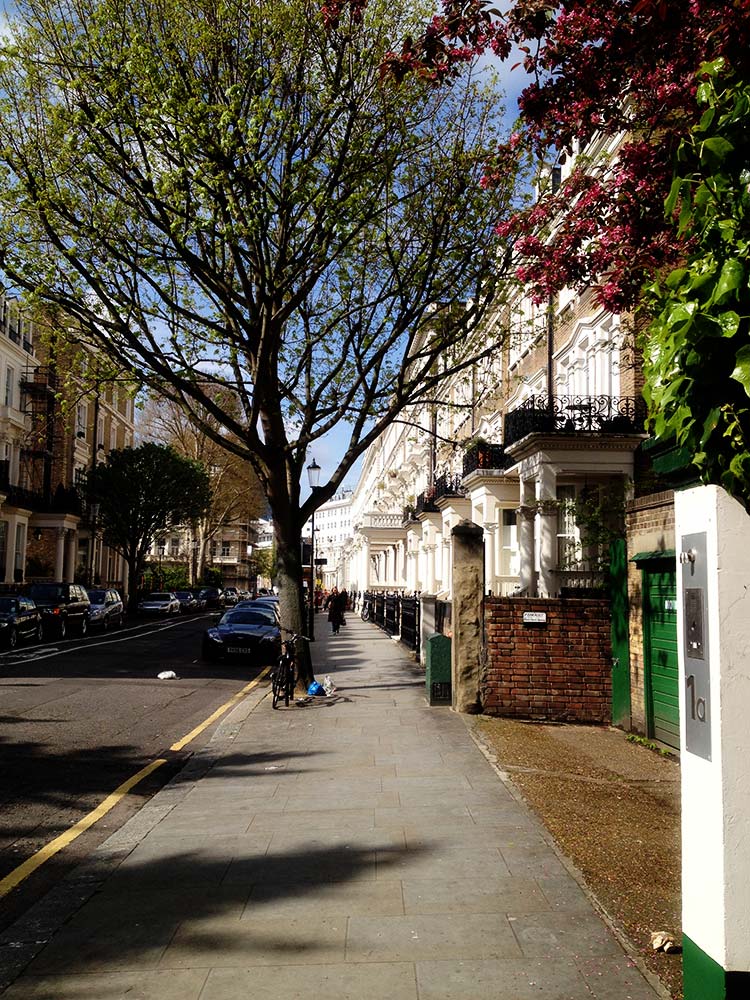Jim Smith, Forestry Commission

This year, over three hundred volunteers from all walks of life, professionals and ordinary members of the public, came together to undertake the largest urban tree and woodland survey of its kind in the world; the RELEAF London i-Tree Eco survey. After being postponed because of the Olympics in 2012 and logistical issues in 2013, we have now succeeded in delivering a project many thought too big to achieve with volunteers.
Over 700 plots across Greater London have been surveyed, providing base line data on the ecosystem service benefits provided by the city’s urban forest. Benefits including: carbon capture and storage; moderating extremes of temperature in summer and winter; as well as peak time water attenuation during flash flooding.
The i-Tree Eco survey methodology was developed by the US Forest Service to assess the ecosystem service value of urban forests across the world. It has been used in Los Angeles, New York, Chicago, Barcelona, Melbourne and, closer to home, in Edinburgh and Glasgow. However, the London survey uniquely teamed professional volunteers with ordinary members of the public who all received training in the i-Tree Eco methodology. The survey element of the project could then be delivered solely by volunteers.
In teams of three (one professional volunteer team leader and two volunteer team members) surveyors visited, on average, eleven plots each. In each plot, they assessed tree canopy cover, and vegetation and surface type; recording all their findings via a bespoke online recording system set up and managed by GiGL.
The project has been a great success and has engaged a significant number of ordinary Londoners with trees and woodlands in their streets, back gardens, open spaces and local neighbourhoods, whether as volunteers or because they allowed the survey teams in to their homes to look at and record the trees in their gardens.
All the volunteers attended a one day training session at one of a number of central London locations to adequately prepare them for the task ahead. They were also asked to select a post code with which they were familiar so they could survey an area where they had good local knowledge. This allowed the project to be delivered quickly and efficiently. The target was for teams to be able to survey three plots a day. In practice however, thanks to local familiarity, many teams were able to do more than this. In all, 74 teams undertook the full survey; towards the end of the survey these were supplemented by professional teams from Treeconomics and Forestry Commission England in a mopping up role to survey hard to access plots and plots that ordinary volunteers were unable to do, such as one within Bellmarsh Prison.
The data is now being analysed and the RELEAF partners are working to provide results quickly, hopefully early in 2015.
The RELEAF partnership comprises of The Greater London Authority, Forestry Commission England, Natural England, The London Tree Officers Association, The Tree Council, Trees for Cities, GiGL and the partnership business partner Treeconomics.
Jim Smith is Forestry Commission England’s National Urban Forestry Advisor. He has worked as an arboriculturist for nearly 30 years. He first worked for the Forestry Commission after leaving school, however has also been an arborist in the Royal Parks and a tree officer for a number of London’s local authorities. He has twice been Chair of the London Tree Officer’s Association.
What GiGL did
Matt Davies
In preparation for the i-Tree survey, GiGL generated the requisite number of randomised survey points in GIS, stratified into inner and outer London areas. We then established whether the plots were in open spaces, back gardens, pavements or elsewhere, and worked out the plot’s nearest address. This contextual information allowed Forestry Commission England, where necessary, to seek permission from landowners to gain access in advance. It also allowed surveyors to know what to expect before setting off for field visits. GiGL then created three detailed maps of each plot that the surveyors could take with them in the field.
Having created the survey points and site maps, it was time to transfer them to iGiGL, GiGL’s online data portal, so that survey participants could preview the plots, plan a field visit, organise travel and download detailed survey maps at home or in the office.
GiGL also created a bespoke web-form for inputting the resulting i-Tree survey data, which the user linked to directly from the relevant plot on the map. The survey was very detailed and to ensure the form was completed accurately, GiGL created a YouTube video to guide participants through the process. This complemented and re-enforced the presentation GiGL delivered at the training events.
As the survey progressed, and responses were received, GiGL kept Forestry Commission England up-to-date with progress to allow the i-Tree team to monitor progress and provide support to the volunteers where necessary.
In addition to benefitting from the final dataset, the project allowed GiGL to develop new technical capabilities in GIS and enhance skills in the development of web-survey forms. If you are interested in developing a project such as this please contact Matt Davies.
